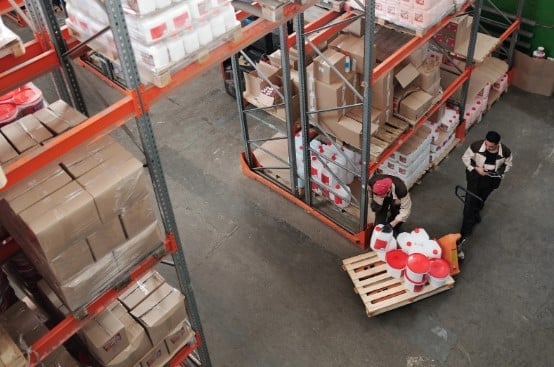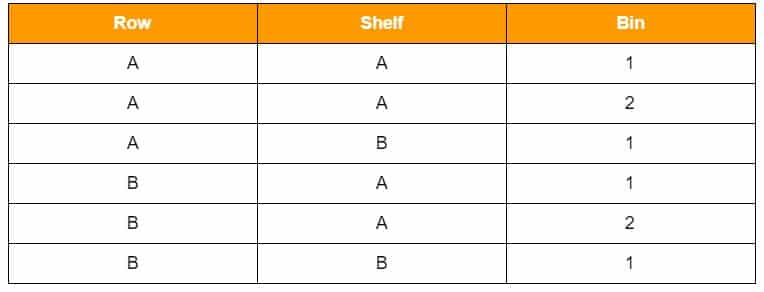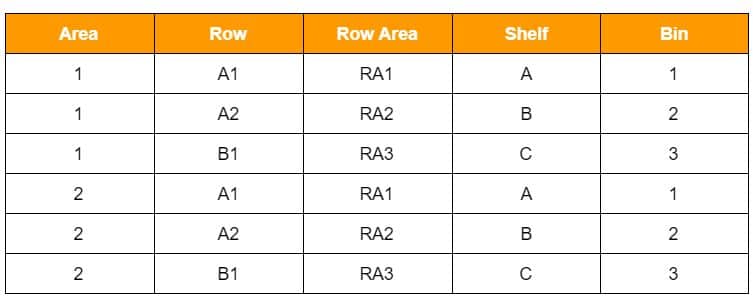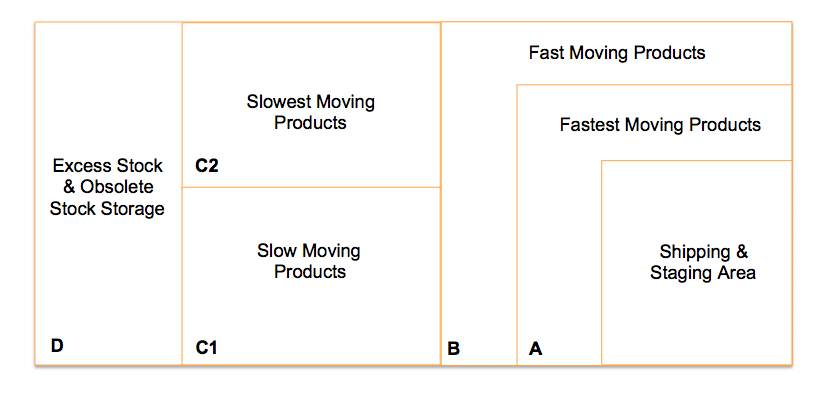The company is undoubtedly familiar with the term warehouse or warehousing. Warehouses are identical to locations where all manufactured goods are stored, either raw materials or finished goods. To ensure that all orders in the warehouse are fulfilled, companies need a management system, particularly a warehouse management system.
Warehousing management is the act of organizing and controlling all the elements in the warehouse and ensuring everything runs optimally. Management in warehouses includes everything from warehouse layout settings, inventory control, equipment maintenance, checking of incoming and outgoing goods, picking, packing, and shipping goods, to the use of automated warehouse management systems.
Warehousing management does involve so many processes and looks pretty complex. This time we will help you understand the aspects and tips of managing the warehouse in detail, but more simply.
Table of Content:
Table of Content
1. Arranging a Warehouse Layout
The most important step in optimizing warehouse management is to ensure an efficient warehouse layout.
What should be considered?
You need to focus on two things: sufficient space for your entire inventory and sufficient area to facilitate your staff working and passing by. In general, a good warehouse consists of these areas:
- Receiving area
- Unpacking area
- Packing area
- Shipping area
- Excess stocking area
- Warehouse office
- Main storage area
Setting the layout of the warehouse can be very difficult if you have limited areas. So, it’s important to sketch before arranging or changing the current layout. To make it easier, you can use the barcode system.
The grid system can facilitate the layout of your warehouse. Remember to provide areas that enable staff to walk fast and pick up items easily. Pickers must be able to walk back and forth in the hallway without blocking each other.
Determining the Location Names in the Warehouse
Effective warehousing cannot be done without specifying location names for clearly labeled stocks. Your staff must be able to know exactly where all the items are located.
Practicality is the key here. Using simple alphanumeric combinations will make it easier to find items. For example, you can start by including labels for particular rows, shelves, and bin locations.
For example, you can store medium-sized black women’s clothes in row A, shelf A, and bin location 2. Black men’s clothes are in row B, shelf B, bin location 1, etc.
Larger warehouses require more detailed location names.
The location name labeling depends on the size of the facility, the operational complexity of your warehouse, and some other factors. But in essence, the greater your facility, the more detail you have to label each location in the warehouse.
function load(e){var t=document.getElementsByTagName(“head”)[0],n=document.createElement(“link”);return n.type=”text/css”,n.rel=”stylesheet”,n.href=e,t.appendChild(n),n}load(‘//unpkg.com/[email protected]’);
2. Optimizing Stock Management in the Warehouse
At this stage, you have arranged your warehouse layout strategically. But then, a question pops into your head: how should I store my products?
The answer is simple: place the best-selling items closest to the packing area!
Implement ABC Analysis
Find your best-selling products and put them as close as possible to the packing area to reduce walking time. This strategy is an ABC analysis. Divide your inventory into three categories:
First category A – Products with the highest sales frequency, 20% of these products contribute to 70-80% of annual sales
Second category B – Products with moderate sales frequency, 30% of these products contribute to 15-25% of annual sales
Third category C – Products with the lowest sales frequency, 50% of these products only contribute to 5% of annual sales
Thus, you can put products in Category A closest to the packing desk and put the products in Category C farthest away.
You can even place small items, which are frequently sold together with the best-selling products, next to the packing desk to save on picking time.
Note: Don’t be afraid to rearrange your product storage. Products in category A will not always be the same. The products sold the most in the middle of the year may become unsold at the end of the year. Thus, you should rearrange the product storage based on season, trends, and other factors.
Tips on Receiving Inventory in the Warehouse
For optimal warehousing, you must ensure that your staff can receive, unpack, store, and order new items as efficiently as possible.
The faster this happens, the faster the stock becomes available for sale
Errors or inefficiencies in this process will affect the entire supply chain. Therefore, you should use solutions that support efficiency. Using a warehouse management system with a mobile-scanning feature is one of the best ways to try.
HashMicro’s warehouse management system allows the process of receiving goods to be much easier. Instead of sitting in front of a computer and manually searching and updating each incoming item, you can simply scan the products and purchase orders, update the inventory quantity, and put the products into specific categories using your smartphone.
3. Speeding Up the Order Fulfillment Process

Order Picking
Order picking may seem easy, but this will be different when you have hundreds or even thousands of different types of goods in your retail warehouse. In fact, the majority of order fulfillment time is spent on order picking.
Therefore, it is important to implement the right order-picking strategy. Here are a few of the most common picking methods:
Single Order
This is the most basic picking method used by startup retailers or wholesalers. Simply put, the pickers will choose one order at a time as a whole before moving to the next. Avoiding this method if you ship more than one order a day is best.
Batch Picking
The pickers are assigned a batch containing the number of orders, and then they pick everything at once and return to the packing desk.
After that, they will get assigned a new batch to pick up other items. The number of orders allocated for each batch is usually between 10 and 30, depending on the physical size of your product and the average number of orders.
Use this method if you have many orders with a single or low number of products. However, if you have many products per order, this method is unsuitable for you.
Zone Picking
In this method, the pickers are assigned to pick items stored in a particular zone at a time. They must pass through all the areas containing the items ordered, pick them up, put them in the container, and then return to the packing desk.
This is a great method for preventing pickers from blocking each other and is suitable for retailers who have a high number of orders with various types of products. Avoid this method if you ship single orders or have very few pickers.
Wave Picking
Similar to zone picking, this method requires pickers to collect goods from several zones simultaneously. Then, packers must combine all separate items for each order.
This method is faster than zone picking, but the packing time is longer because the packers must spend more time combining orders before shipping them. The wave picking zone is suitable for retailers who are used to sending many orders with multiple types of goods and need a super-fast picking process.
Note: With an automatic inventory management software, the wave-picking process is even faster. Because the order-picking schedule is automatic, assignments are divided into sessions (wave) based on date, SKU, delivery method, and other categories. This system reduces human error by helping pickers know which items will be picked next.
How to Pack Items Efficiently
Packing is not just about putting orders in boxes and wrapping them quickly. This is the moment to ensure that you ship the right product to the right customer most efficiently. Two things you should pay attention to here are the packaging sizes and packaging materials.
The size of your boxes can have a big impact on operational costs. The bigger the size of your boxes, the more costs you will need to pay the courier. Having too many box sizes will also confuse the packers, so it’s best to choose just a few sizes based on the items that are frequently ordered.
Next, pay attention to the packaging materials you use. Ensure they protect your goods when delivered and in transit, but you should not add too much weight to the product; otherwise, it will lead to high procurement and shipping costs. It is important to conduct a thorough evaluation of your packing method so that you will be able to eliminate unnecessary materials and make them more efficient.
Ship Orders Faster and Accurately!
A few steps that you must in the shipping process include:
- Weighing the packages
- Printing the relevant shipping labels (and invoices, if you haven’t already)*
- Marking order status as ‘Shipped’ on the system
- Sending ‘shipping confirmation’ emails to the customers (an inventory management system integrated with a sales management system can perform this automatically)
HashMicro Inventory enables you to print labels and other shipping documents instantly.
4. Evaluating and Measuring Your Warehouse Performance
Evaluation is critical to actualize proper warehousing. The following are some indicators that you should check when measuring the success of your warehouse management:
Receiving Process
Find out how much time is usually spent on receiving, including how your staff records incoming items and how they have them stored. The manual method requires a long time to record and update inventory. Therefore, adopting an automated warehouse management system is a must!
Product Returns
Know the reasons why customer orders get returned to your warehouse. This could be due to wrong products, incorrect shipping addresses, late deliveries, damage during transit, etc. Analyzing the problem will help improve your warehousing performance significantly.
Picking Process
Measuring the accuracy of the picking process can give you insight into the performance of your warehouse. Here is the formula for measuring it:
Lead Time
Lead time is the time it takes for customers to receive orders, also called order processing time. The shorter the lead time, the happier your customers are. Make sure that prompt delivery does not reduce the condition of your product.
5. Choosing the Right Warehouse Management System
Warehouse Management Software (WMS) basically can take over most of the warehouse operations. This tool will automate and digitize as many processes as possible.
An automated warehouse management system helps you ensure that everything is organized, tracked, and well-documented. Human error can be minimized so that accuracy gets optimized. And certainly, all processes will become faster and simpler. However, finding the right warehouse management system can be tricky.
To facilitate the WMS selection, find out the answers to the following questions:
- How accurate is your current picking process?
- What are your warehousing KPIs? And how profitable will it be if you optimize each of those KPIs?
- How many team members are needed to carry out your operations? Would it be more economical if you replaced some of them with an automated system?
- How many orders do you handle each day? And how much turnover do they generate every year?
- Have you reached your growth target? How fast do you plan to achieve your business growth?
Important aspects that you should look for in a WMS.
- Ability to organize warehouses: Helps speed up the numbering, warehouse labeling, storage, picking, packing, and shipping
- Integration with barcode scanners: Can be used on mobile and integrated with barcode scanners to minimize paper requirements and optimize accuracy when picking and packing
- Multi-warehouse management: This makes it easy for you to manage all outlets or warehouses across multiple locations
- Ease of use: A simple platform that can be learned and operated easily by each user
- Integration with other automated systems: Allows you to integrate it with other systems that you use for optimal results, such as an cloud based inventory management system, a sales management system, an accounting system, etc.
- Real-time reporting: This enables everyone to track information in real-time and record every activity in the warehouse, such as the entry and exit of goods, the exact quantity of inventory, etc. Additionally, the inventory aging report can be integrated to track the age of stock, helping you identify slow-moving items and manage older stock before it becomes obsolete, ultimately reducing potential losses.
Conclusion
Warehousing is a very complex task, especially in large companies. Even so, the right automated strategy and implementation of solutions can make this activity much more superficial. Using HashMicro’s warehouse management software can optimize multi-warehouse efficiency while maximizing space usage.
It all comes down to good warehouse layout settings, efficient stock management, evaluation and measurement of warehouse management performance, and proper use of WMS.
Systematic placement and collection of goods make the supply of goods faster and more efficient. Generate savings in storage costs due to waste of shelf use. HashMicro’s WMS system fully integrates purchasing management, inventory management, and accounting systems to support your business.
If you want to use HashMicro’s system, try the free demo first.

{
“@context”: “https://schema.org”,
“@type”: “FAQPage”,
“mainEntity”: [{
“@type”: “Question”,
“name”: “What is warehouse management?”,
“acceptedAnswer”: {
“@type”: “Answer”,
“text”: “Warehousing management is the act of organizing and controlling all the elements in the warehouse and ensuring everything runs optimally. Management in warehouses includes everything from warehouse layout settings, inventory control, equipment maintenance, checking of incoming and outgoing goods, picking, packing, and shipping goods, to the use of automated warehouse management systems.”
}
},{
“@type”: “Question”,
“name”: “What is warehouse management system?”,
“acceptedAnswer”: {
“@type”: “Answer”,
“text”: “Warehouse management systems support warehouse staff in performing the processes required to handle all of the major and many minor warehouse tasks such as receiving, inspection and acceptance, put-away, internal replenishment to picking positions, picking, packing, value added services, order assembly on the shipping.”
}
}]
}






































